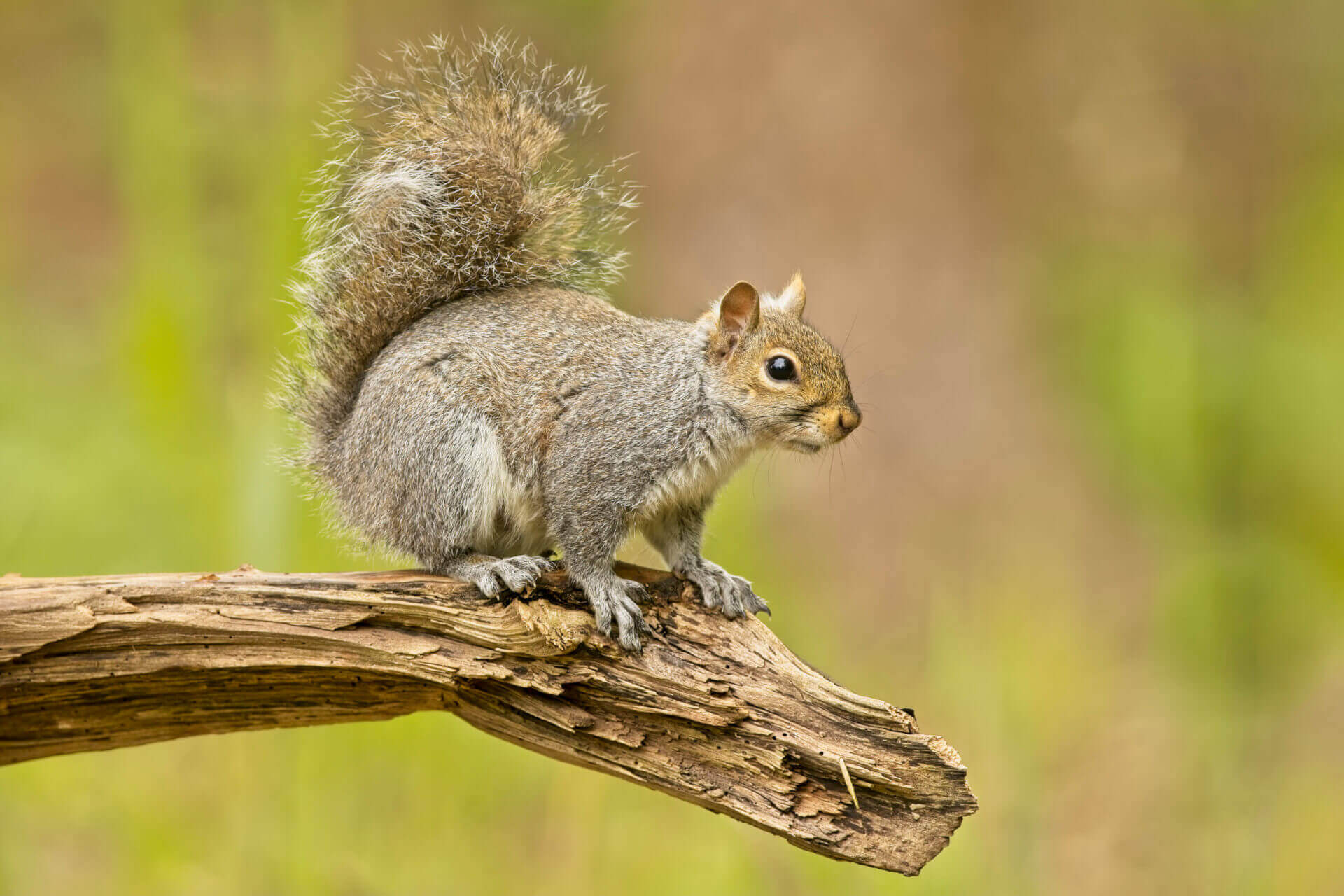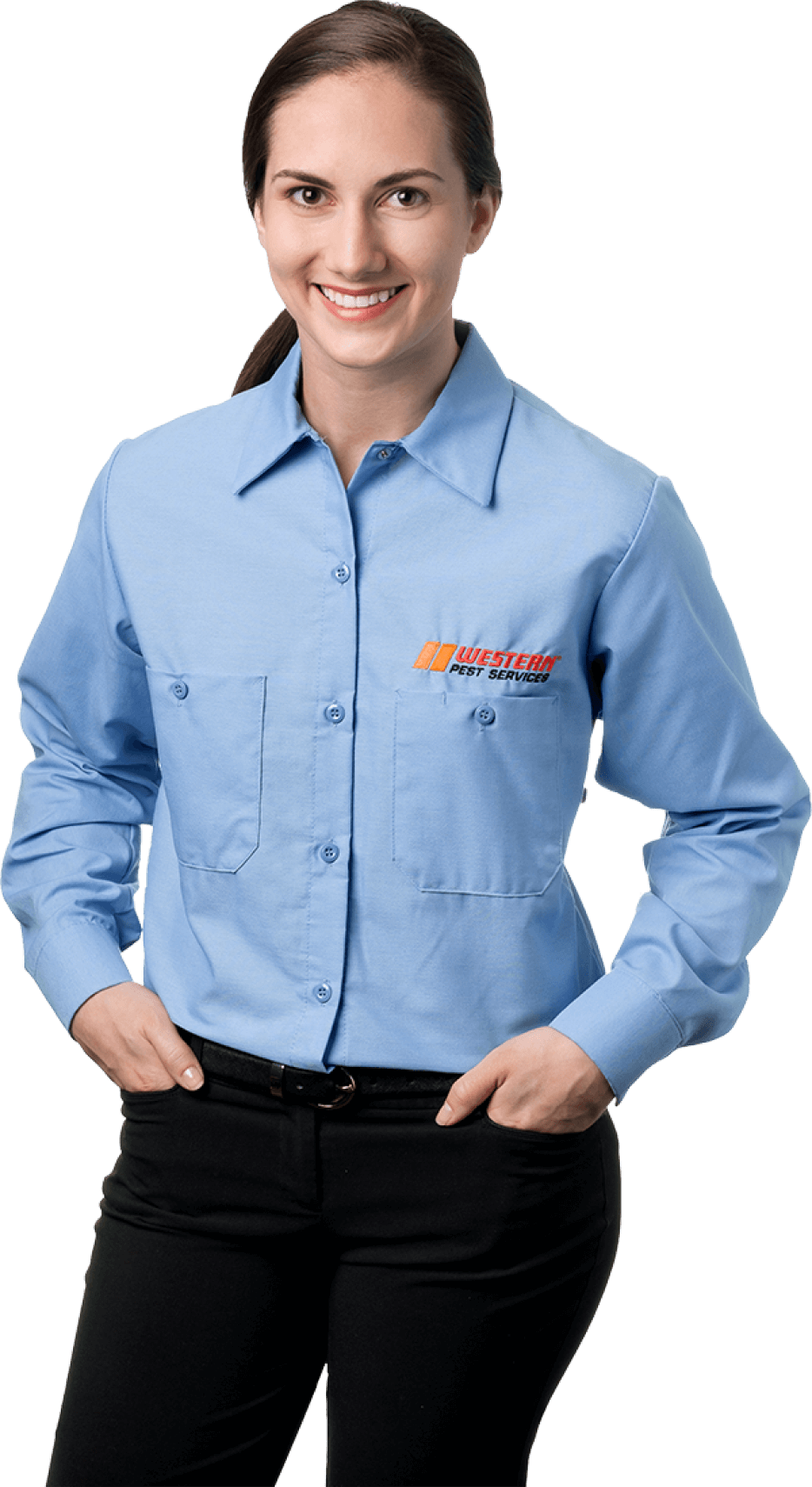Squirrel Facts & Information
Everything you need to know about the common squirrel
what do Squirrels look like

You can’t live in the Mid-Atlantic and not know what a squirrel looks like! But just in cases: squirrels are generally small rodents with slender bodies, bushy tails, and large eyes. In general, their fur is short, soft, and silky, and ranges in thickness from species to species. The color of their fur is also highly variable and can be whitish, gray, yellow, red, brown, or even black. It is often assumed that squirrels only eat nuts, but squirrels are omnivores, which means they like to eat plants and meat. Oftentimes squirrels rely on fungi, seeds, nuts and fruits for nutrition, but they will also eat eggs, small insects, caterpillars, small animals and even young snakes. On average, squirrels eat about one pound of food per week. As their food source is highly variable with the weather, squirrels will prepare for colder months, when food is scarce, by burying their food so they have a store of food they can eat when supplies are scarce.
Squirrels have four teeth in the front of their mouth that constantly grow throughout their lives. This ensures that their teeth don’t wear down to nubs from gnawing on nuts and other objects. A group of squirrels are called a scurry or dray. They are very territorial and will fight to the death to defend their area.
Mother squirrels are the most vicious when defending their babies. A female carries her young for a gestation period of 29 to 65 days, depending on the size of the species; smaller squirrels have shorter gestation periods. Mothers give birth to two to eight offspring at one time. Babies are called kits or kittens and are born blind. They depend on their mothers for around two or three months. After seven to eight weeks, the young are weaned. When the kits leave the nest, they don’t travel farther than 2 miles from home.Not the squirrel you have?
Squirrels have four teeth in the front of their mouth that constantly grow throughout their lives. This ensures that their teeth don’t wear down to nubs from gnawing on nuts and other objects. A group of squirrels are called a scurry or dray. They are very territorial and will fight to the death to defend their area.
Mother squirrels are the most vicious when defending their babies. A female carries her young for a gestation period of 29 to 65 days, depending on the size of the species; smaller squirrels have shorter gestation periods. Mothers give birth to two to eight offspring at one time. Babies are called kits or kittens and are born blind. They depend on their mothers for around two or three months. After seven to eight weeks, the young are weaned. When the kits leave the nest, they don’t travel farther than 2 miles from home.Not the squirrel you have?
Where do squirrels live
In general, squirrels nest in tree cavities or build nests in tree branches during the warmer months. When it is colder, squirrels may live in tree holes, but are also known for invading homes and structures to keep warm. Squirrels have remarkable little bodies. For example, a squirrel has padded feet that will cushion them for jumps from up to 20 feet long. Their eyes are high on their head and placed on each side of the head so they can see a large amount of their surroundings without having to turn their head. They are also fantastic runners. Squirrels can run 20 mph! So, they’re fast, nimble, and kind of cute. But not when they’re in your attic.
How did I get squirrels
How can a squirrel get inside? Squirrels can chew through shingles, aluminum, and wood siding, which can provide access to an attic – whether it’s in a home or a business. Attics are desirable to squirrels because they provide a warm, dry atmosphere to build a nest, away from threatening outdoor elements. Animals of all types go where they can safely find food, too. Squirrels commonly eat nuts, acorns, birdseed, insects, fungi, fruit, and vegetables so if you have a bird feeder, nut or fruit tree, and vegetable garden, you’ve probably already attracted squirrels to your property. If you have shrubbery or trees with limbs that are close to your roof, squirrels can easily get to your building or home and then find their way inside to nest.
what Problems do squirrels cause
Often referred to as nuisance wildlife, squirrels present their own unique set of dangers when it comes to their interaction with humans as they can become aggressive when they feel frightened or threatened. While people should be cautious year-round, squirrels tend to be more of an issue in fall and winter as the weather becomes colder and they look for a place to stay warm. During these months, homes and businesses become an ideal shelter for squirrels.
Squirrels will gnaw at wires, which could create a fire hazard. They will also gnaw at insulation and use it to urinate and defecate. Once that insulation gets squirrel poop and pee on it, it’s contaminated. Not only can that cost you a lot of money to replace, once the urine and feces break down, it can contaminate the air you’re breathing. As if that’s not enough, they can also damage walls and sheetrock and keep you up at night with their noisy scurrying. These rodents with bushy tails can do some pricey damage!
Squirrels will gnaw at wires, which could create a fire hazard. They will also gnaw at insulation and use it to urinate and defecate. Once that insulation gets squirrel poop and pee on it, it’s contaminated. Not only can that cost you a lot of money to replace, once the urine and feces break down, it can contaminate the air you’re breathing. As if that’s not enough, they can also damage walls and sheetrock and keep you up at night with their noisy scurrying. These rodents with bushy tails can do some pricey damage!
How can I get rid of squirrels
Preventing squirrels is all about exclusion work. Exclusion strategies work at getting rid of entry points as well as minimizing attractants. It works for more than just squirrels if done correctly. That’s why calling in a professional is best for exclusion work. A pro will seal all possible points of entry around the structure including small openings and cracks around doors and windows. They will also install screen vents to all openings including the chimney. Have your landscaping cut all tree limbs back to 6-8 feet from your roofline to cut off that access to squirrels. You should be keeping food in airtight containers and dispose of garbage regularly. Cleaning garbage cans and the trash area routinely will help ward off squirrels – and flies and rats and mice and cockroaches and and and! If you do get a squirrel in your home, be sure to call in a professional so removing them is done humanely and effectively.
WHY WESTERN for squirrel removal
We’re passionate about controlling squirrels in your home or business because we live and work here – it’s our neighborhood, too. With our almost 100 years of experience keeping homes and businesses in Connecticut, Delaware, New Jersey, New York, and Pennsylvania safe from pests, Western has the experience you can trust.
100% Satisfaction Guarantee
24-Hour Guaranteed Response
Board Certified Entomologists
Say goodbye to squirrels.
GET MY QUOTE
